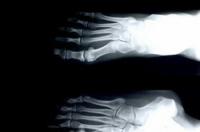Teach family tree analysis in an understandable way with exercises
A family tree analysis is the analysis of the chromosomes of a cell, i.e. the karyograms. In hereditary research and twin research, family tree analysis belongs to human genetics. The aim is to be able to deduce certain genotypes (hereditary dispositions) from certain phenotypes (characteristics) in order to obtain predictions about hereditary predispositions of the next generation. This biological lesson in schools is not easy to understand for everyone. Because of this, exercise can be very supportive.

What you need:
- Imagery
Introduce students to family tree analysis slowly
- The basis of the medical practice of pedigree analysis is that a specialist diagnoses the syndrome of a disease and a geneticist researches how it is inherited. It is difficult to accurately diagnose a differential diagnosis. Many specialized tests and laboratories are necessary to gain insight into the science of inheritance. Still, it's an interesting field of science.
- Exercises pedigree analysis can help upper-grade students better understand this particular lesson. The most important thing at the beginning is certainly that you make it clear to the students that genetic research is only possible with Probabilities can arise, because as a rule the examined number of persons in a family tree is too small to make precise statements to be able to meet.
- The first of your exercises should be to have your students do a simulation of probability. Place two different coins in front of your students and have them toss them into the air several times to note how often the same, original image result can be seen again. First, teach students basic family tree analysis:
- In the family tree analysis, one first documents which features are recessive (receding) or dominant (protruding) in each generation. The second question is about determining whether the traits are gonosomal or autosomal. Gonosomal means that it is the sex-specific chromosome 23, i.e. the male's XY chromosome, resp. of the XX chromosome of the woman, while "autosomal" means the 1 to 22 chromosomes, i.e. those that are not gender-specific.
- Ultimately, an exact statement should be made about which genotypes can be determined. In that case it is necessary, by e.g. B. an intersection scheme to prove the hypothesis. Scientists basically justify under the statement why an alternative is to be excluded. For the classes In the upper classes, you should therefore first explain the gonosomal and autosomal inheritance.
Family tree analysis - an explanation of the method
With this explanation, the family tree analysis shows the degree of relationship within a ...
- In genetic research, the expression of a gene is described with the word "alleles". In the case of gonosomal inheritance, it is assumed that the specific alleles of the X chromosomes are passed on. Exceptions confirm, however, that the examined "allele" can also be located on a Y chromosome. Z. B. Blood diseases are inherited in this way. The "allele" becomes recessive e.g. B. inherited when phenotypically unaffected parents give birth to children who have the hereditary disease.
You can use these exercises to design the lesson
- Record the pedigree of a fictional family by Counting use. Assume a set of parents, square (male) 1 and circle (female) 2, who have three children. Deriving from the parents, draw a line on which there is a square, a circle and again a square. Independently of the three children, draw a single circle next to a square on the outside for the future daughter-in-law.
- Now number the "daughter-in-law" with 3, the boy (square) with 4, the daughter (circle) with 5 and the youngest son (square) with 6. Give the students these exercises to further record the family tree themselves by drawing circle 3 and Square 4, two children (square) 8 and circle 9, with respective partners (circle) 7 and square 10 obtain.
- The last chain of the family tree consists of the sons squares 11, 12, 13, who belong to parents 7 and 8, and the children 14 (square), 15 (circle) and 16 (square). Now have the number 4 and number 14 colored in red because these people have a hereditary disease. Use this scheme to work out the following exercises: "How was the hereditary disease inherited?" "Is it a dominant or a recessive hereditary disease?"
- "Which pairs of parents can the hereditary disease be proven?" "What are the genotypes?" Using fictional, pictorial family trees, you can perform many different exercises by You z. B. "reconstruct" an alleged visual impairment. These schemes help students understand family tree analysis more vividly.
How helpful do you find this article?


